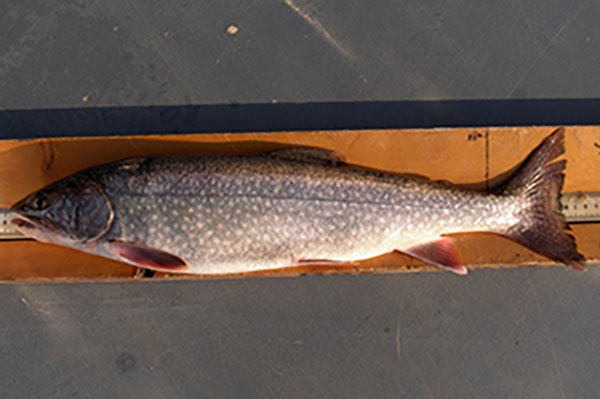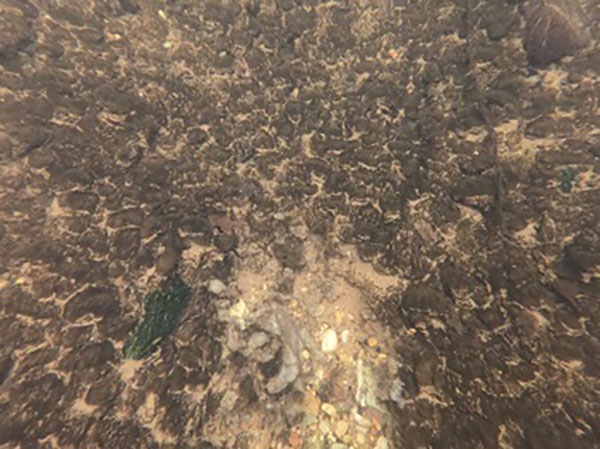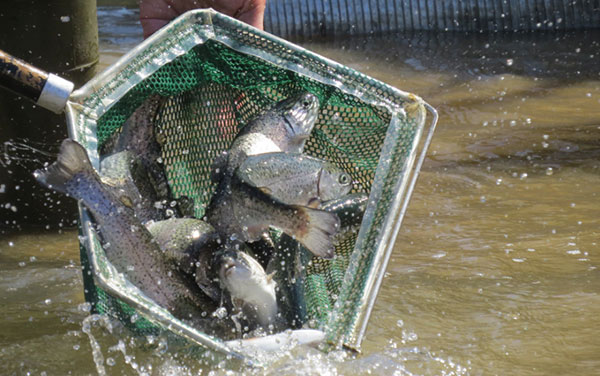- Details
By Louie Stout
The crazy summer weather that hampered the Lake Michigan perch fishery and currently is delaying the steelhead run may have provided some positive benefits as well.
There is no question the summertime Lake Michigan perch fishery in Indiana was a stinker, due mostly to lake conditions, but there are signs of a brighter future.
More about that later.
Although the recent cool snap sent some trout and salmon through the South Bend ladder, we need rain to create more water flow and a drop in temperatures to draw more fall-run fish into the upper St. Joseph River and get them biting.\
Those were the opinions of Lake Michigan Biologist Ben Dickinson who noted the current warm weather and low water is delaying the run.
“The weather is the big thing,” he said when discussing the current trout and salmon fall run. “If the river is low and water temps are above 70, the fish don’t move upriver.”
South Bend fish ladder counts through Sept. 19 were 500 steelhead, 21 king salmon and 242 coho, most of which passed above the South Bend dam during last week’s cool down.
- Details
MDNR Report
 Lake Superior Splake
Lake Superior Splake
Anglers fishing Lake Superior can help the Michigan DNR evaluate the splake fishery by reporting marked splake.
Splake, which are a hybrid cross between lake trout and brook trout, have been stocked in Lake Superior most years since 1971, with annual stocking since 1990.
Since 2021, marked splake have been stocked in Lake Superior. At the Marquette State Fish Hatchery, staff from the DNR’s Lake Superior and Northern Lake Michigan management units, as well as field staff from across the state, put in long hours carefully marking the splake by hand. These fish then get stocked at three Lake Superior ports: Copper Harbor, Keweenaw Bay and Munising. Splake stocked at each port get a unique mark specific to each location for further analysis. The goal is to create nearshore fishing opportunities in the smaller bays of Lake Superior, where some fisheries are available year-round.
- Details
Michigan DNR Report
The flies are tied and rods and waders are ready as the April 29 statewide trout opener approaches.
Before heading out to that favorite fishing spot this season, the departments of Natural Resources and Environment, Great Lakes, and Energy are asking anglers to prepare for one more thing: decontamination.
Michigan’s trout streams are under increasing threat from harmful species that affect habitat and food sources for trout and other fish. Both didymo (rock snot) and New Zealand mudsnail can be moved to new locations on waders, nets and gear.
Didymo
 Didymo
Didymo
Didymo is a microscopic diatom (single-celled alga) that thrives in cold, low-nutrient streams generally considered pristine. Under the right conditions, prolific growth, or blooms, result in thick mats that can cover river and stream bottoms, reducing habitat for macroinvertebrates including mayfly and caddisfly nymphs, which are important food for fish.
- Details
IDNR Report
 Indiana Trout Stocking
Indiana Trout Stocking
The Indiana DNR is stocking nearly 50,000 trout across the state this spring in preparation for trout fishing season. Thirty-three bodies of water across 21 counties will be stocked before opening day of trout season, which is Saturday, April 29.
Lake stockings of rainbow trout started the week of March 20. Anglers do not have to wait for opening day of stream trout fishing season to fish for these aggressive biters because trout fishing on lakes is open all year.
- Details
By Louie Stout
The Indiana DNR is seeking angler feedback as they put together a chinook salmon management plan.
Surveys are being emailed to everyone who bought a license online last year and all anglers are urged to participate.
“We’re looking for public input about our chinook salmon stocking,” says DNR Lake Michigan Biologist Ben Dickinson. “The survey will cover angling habits and ask questions about the various management options the DNR is offering.”
Anglers who didn’t buy their license online or didn’t receive an invitation through email may take the survey by using a generic link: bit.ly/chinooksalmonstockingsurvey.





